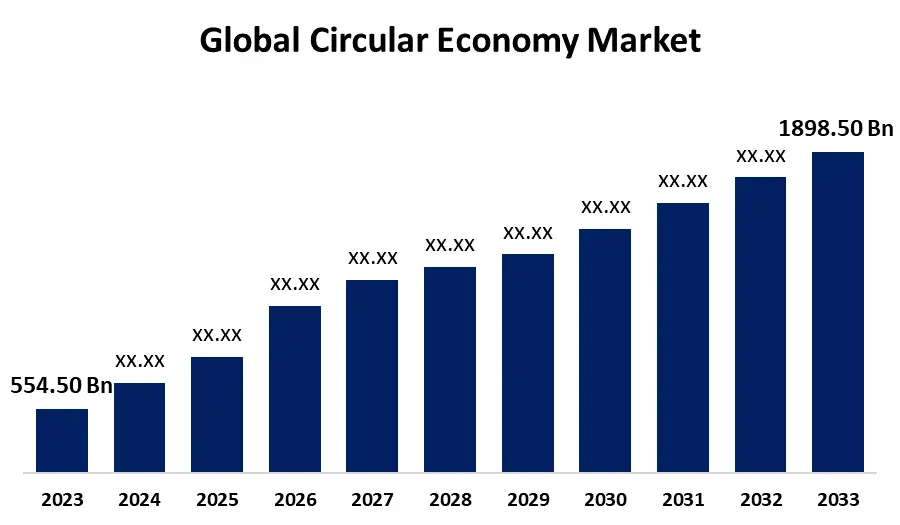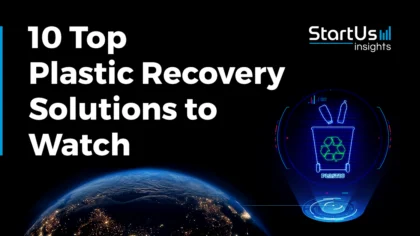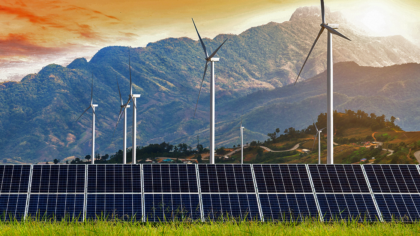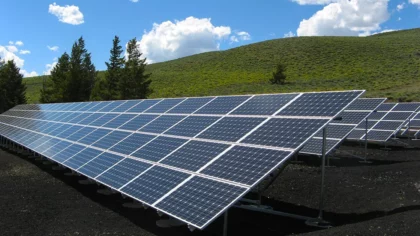Accelerate Productivity in 2025
Reignite Growth Despite the Global Slowdown
The 2025 Circular Economy Report provides an overview of the sector’s current landscape, emphasizing key trends, innovations, and market dynamics. This report explores the performance of emerging startups and tech advancements driving the industry towards sustainability. Focusing on waste reduction, resource efficiency, and environmental impact, the report offers insights into how these factors shape the circular economy.
This report was last updated in January, 2025.
This circular economy report serves as a reference for stakeholders within the industry, investors, policymakers, and economic analysts, providing a snapshot of the industry’s health to map its trajectory for innovation and growth in the coming years.
Executive Summary: Circular Economy Report 2025
- Industry Growth: The circular economy industry has shown steady growth with a 7.50% increase in the last year, indicating robust development. The North American circular economy market is expected to grow at a compound annual growth rate (CAGR) of 25.65% through the projection period of 2024 to 2031.
- Manpower & Employment Growth: The sector employs over 2.2 million individuals globally, adding 125 000 new employees in the past year, highlighting significant employment opportunities. In India, the circular economy could potentially create close to 10 million jobs by 2050.
- Patents & Grants: Innovation within the industry is strong, with over 41 000 patents and 4700+ grants supporting research and development.
- Global Footprint: Leading country hubs include the USA, the UK, Germany, India, and Italy, with key city hubs in London, New York City, Sydney, Melbourne, and Singapore. With a circularity rate of 11.8% in 2023, Europe utilized a higher proportion of recycled materials than other world regions.
- Investment Landscape: The industry has seen substantial investments, with an average investment value of USD 37 million per funding round and over 9200 funding rounds closed.
- Top Investors: Top investors include European Investment Bank, Temasek Holdings, Bain Capital, and more.
- Startup Ecosystem: Five innovative startup features include Protein Evolution (Plastic Recycling), Cyclize (Chemical Industry Decarbonization), Phoenix Carbon (Composite Recycling), Solarcycle (Circular Solar Economy), and Lite-1 Bio (Circular Dyes).

Methodology: How we created this Circular Economy Report
This report is based on proprietary data from our AI-powered Discovery Platform, which tracks 25 million global companies, 20K+ technologies and trends as well as 110M patents and business reports. Our data includes detailed firmographic insights into approximately 5 million startups, scaleups, and tech companies. Leveraging this extensive database, we provide actionable insights on innovation, emerging technologies and market trends.
For this report, we focused on the evolution of circular economy over the past 5 years, utilizing our platform’s trend intelligence feature. Key data points analyzed include:
- Total Companies working on the trend
- News Coverage and Annual Growth
- Market Maturity and Patents
- Global Search Volume & Growth
- Funding Activity and Top Countries
- Subtrends within circular economy sector
Our data is refreshed regularly, enabling trend comparisons for deeper insights into their relative impact and importance.
Additionally, we reviewed trusted external resources to supplement our findings with broader market data and predictions, ensuring a reliable and comprehensive overview of the circular economy market.
What data is used to create this circular economy report?
Based on the data provided by our Discovery Platform, we observe that the circular economy industry ranks among the top 5% in the following categories relative to all 20K topics in our database.
These categories provide a comprehensive overview of the industry’s key metrics and inform the short-term future direction of the industry.
- News Coverage & Publications: The industry has received significant news coverage and publications, with over 42 000 publications last year.
- Funding Rounds: The database records over 9200 funding rounds, showcasing robust investment activity.
- Manpower: The circular economy employs over 2.2 million workers, having added more than 125 000 new employees last year.
- Patents: With more than 41 000 patents, the industry demonstrates strong innovation and intellectual property growth.
- Grants: The industry has secured over 4700 grants, highlighting substantial research and development funding.
- Yearly Global Search Growth: Yearly global search growth for the industry stands at 53.17%, indicating increasing interest and visibility.
Explore the Data-driven Circular Economy Outlook for 2025
The circular economy industry has demonstrated steady growth and innovation, as evidenced by key data points highlighted in this heatmap. Our database includes 1696 startups and over 20 000 companies globally, reflecting a diverse and expansive sector. The industry experienced a growth rate of 7.50% in the last year, showcasing its dynamic nature and capacity for expansion.
Innovation within the circular economy industry is robust, with over 41 000 patents and more than 4700 grants supporting research and development.
The global circular economy market is set to grow at a CAGR of 13.10% from 2023 to 2033. The digital circular economy market is anticipated to grow at a CAGR of 24.4% during the forecast period of 2024 to 2031.

Credit: Spherical Insights
The sector employs 2.2 million individuals worldwide, with a significant addition of 125 000 new employees in the past year. Leading country hubs driving this growth include the USA, the UK, Germany, India, and Italy. Key city hubs fostering innovation and development in the circular economy are London, New York City, Sydney, Melbourne, and Singapore. The heatmap above visualizes these data points, highlighting regions with significant industry activity and innovation.
A Snapshot of the Global Circular Economy Industry
The circular economy industry has shown significant growth and investment activity over the past year, reflected by key metrics. The sector experienced substantial employee growth, adding 125 000 new employees, contributing to a total of over 20 000 companies globally. Additionally, the global waste recycling services market is expected to grow at a CAGR of 5.2% from 2024 to 2031. This expansion highlights the industry’s resilience and its capacity to generate employment opportunities.
Explore the Funding Landscape of the Circular Economy
Investment in the circular economy industry has been robust, with an average investment value of USD 37 million per funding round. The industry has attracted over 3000 investors, indicating strong confidence in its potential and innovation. There have been more than 9200 funding rounds closed, showcasing a high level of investment activity and interest.

Further, over 3750 companies have received investments, demonstrating a broad distribution of funding across various enterprises within the sector. This widespread investment supports the industry’s growth, development, and ongoing innovation, positioning it as a dynamic and evolving field within the global economy. The data underscores the circular economy industry’s importance and its continuous advancement through substantial financial backing and an expanding workforce.
Who is Investing in Circular Economy Solutions?
The circular economy industry has attracted substantial investments, with top investors contributing more than USD 3 billion combined. This significant financial support highlights the industry’s potential and ongoing innovation.

- European Investment Bank has invested USD 890 million in 7 companies, demonstrating strong support for sustainable projects and innovation.
- Temasek Holdings has invested USD 596 million in 6 companies, reflecting its commitment to advancing circular economy initiatives.
- Bain Capital has invested USD 519 million in 2 companies, showcasing its confidence in high-potential ventures within the sector.
- Credit Agricole has invested USD 503 million in 4 companies, emphasizing its focus on fostering growth and sustainability.
- DST Global has invested USD 461 million in 4 companies, highlighting its strategic investments in transformative technologies.
- JP Morgan has invested USD 368 million in 2 companies, underlining its role in supporting innovative and sustainable business models.
These top investors play a crucial role in driving the industry’s growth and innovation, supporting a wide range of companies and projects. Their investments help fuel technological advancements, sustainability initiatives, and market expansion, contributing to the overall dynamism and resilience of the circular economy sector.
Access Top Circular Economy Innovations & Trends with the Discovery Platform
Explore the firmographic details of the circular economy trends:
- GreenTech includes 2048 companies employing 114 700 individuals. Despite adding 8400 new employees last year, the annual growth rate stands at 3.49%. This indicates challenges in the segment, despite ongoing efforts towards innovation and sustainability. GreenTech focuses on developing environmentally friendly technologies to reduce carbon footprints and enhance resource efficiency. The segment’s negative growth rate suggests the need for increased support and investment to overcome current hurdles and drive future advancements.
- Sustainable Waste Management is a growing segment with 1226 companies and 107 000 employees. This sector saw an addition of 5900 new employees in the past year, reflecting its expanding significance. The annual growth rate of 3.52% highlights steady advancements and the adoption of sustainable waste practices. The positive growth trend underscores the increasing importance of efficient waste management solutions in achieving sustainability goals.
- Sustainable Construction involves 1477 companies and employs 212 500 individuals. This segment added 9500 new employees last year, indicating ongoing development. However, the annual growth rate of -3.29% points to a slight decline. Sustainable construction aims to minimize environmental impact through eco-friendly building practices and materials. Despite the marginal negative growth rate, the sector remains crucial for driving sustainability in the construction industry.
5 Top Examples from 1650+ Innovative Circular Economy Startups
The five innovative startups showcased below are picked based on data including the trend they operate within and their relevance, founding year, funding status, and more. Book a demo to find promising startups, emerging trends, or industry data specific to your company’s needs and objectives.
Protein Evolution develops Plastic Waste Conversion Technology
US-based startup Protein Evolution develops innovative technology to recycle plastic waste into valuable resources. Its proprietary platform utilizes enzymatic processes to break down various plastics efficiently. This method produces high-quality recycled materials, reducing environmental impact.
The technology focuses on converting waste into reusable feedstocks for manufacturing. Protein Evolution’s approach enhances circular economy principles by promoting material reuse.
Cyclize accelerates Chemical Industry Decarbonization
Cyclize is a German startup developing innovative recycling technology for the circular economy industry. Its platform, CyclizeCore, processes plastic waste into high-quality recycled materials, promoting resource efficiency.
CyclizeCore utilizes advanced sorting and purification techniques to ensure the purity of recycled products. The technology integrates seamlessly with existing waste management systems, enhancing operational efficiency. Cyclize’s approach reduces landfill waste and supports sustainable production practices.
Phoenix Carbon converts Organic Waste into Biochar & Energy
Pacific Hydrocarbon is a UK-based startup that develops sustainable waste management solutions by converting organic waste into valuable biochar and renewable energy.
Its proprietary technology, PH Carbon Capture, efficiently processes waste materials to produce high-quality biochar. This biochar enhances soil health, reduces greenhouse gas emissions, and improves agricultural productivity.
The PH Carbon Capture platform also generates renewable energy, contributing to a circular economy by maximizing resource utilization.
SOLARCYCLE recycles Solar Panels
US-based startup SOLARCYCLE focuses on recycling solar panels to promote a circular economy in the renewable energy sector. Its advanced technology recovers valuable materials like silicon, silver, and copper from end-of-life solar panels.
This process minimizes waste and supports sustainable manufacturing practices. The company’s platform ensures efficient material recovery while reducing the environmental impact of solar panel disposal. This approach enhances resource efficiency by reintegrating recovered materials into the production cycle.
Lite-1 Bio produces Circular Dyes
Canadian startup Lite-1 Bio develops innovative biodegradable materials for sustainable solutions in the circular economy. Its proprietary platform uses bio-based polymers to create fully compostable and recyclable products.
This technology reduces reliance on fossil fuels and minimizes environmental impact by replacing traditional plastics. The company’s materials offer high performance and durability while maintaining eco-friendly characteristics. Lite-1 Bio’s products include packaging solutions that decompose naturally without leaving harmful residues.
Gain Comprehensive Insights into Circular Economy Trends, Startups, or Technologies
The 2025 Circular Economy Industry Report highlights the sector’s critical role in advancing sustainable practices and resource efficiency. Significant growth areas, such as green technologies, sustainable waste management, and sustainable heavy industries, showcase the industry’s commitment to sustainability and innovation. Get in touch to explore all 1650+ startups and scaleups, as well as all industry trends impacting numerous industries and companies worldwide.




![Explore the Top 10 Waste Management Industry Trends & Innovations [2025]](https://www.startus-insights.com/wp-content/uploads/2025/06/Waste-Management-Industry-Trends-SharedImg-StartUs-Insights-noresize-420x236.webp)





